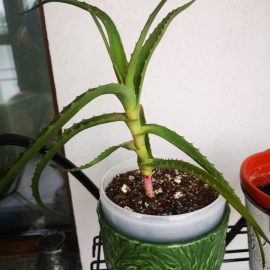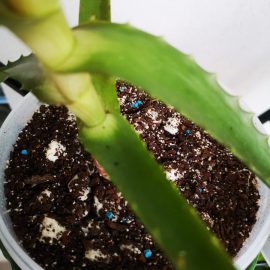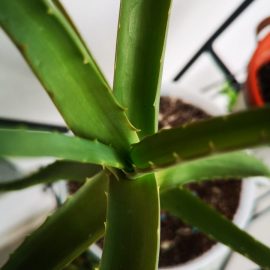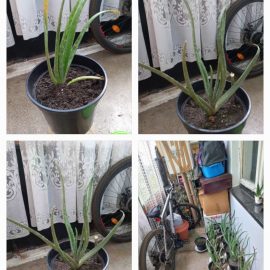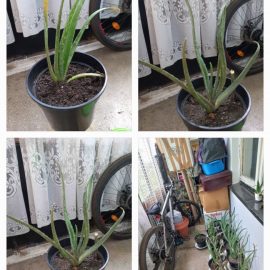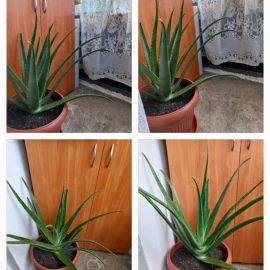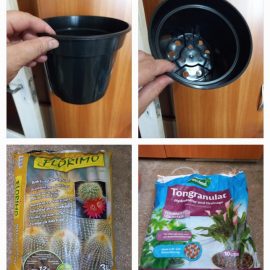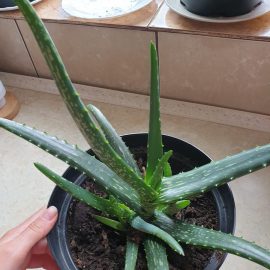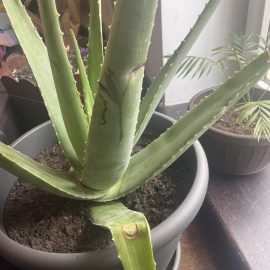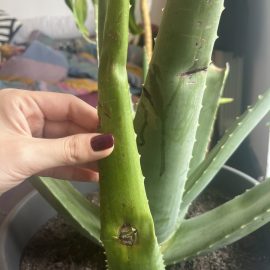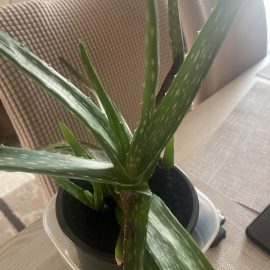Aloe, plant care and growing guide
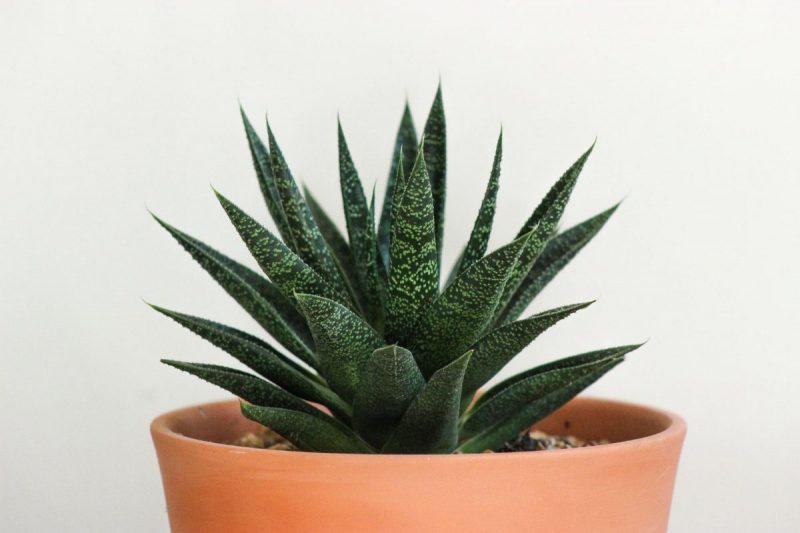
The Aloe genus includes succulent plants native to South Africa. In some countries, aloe plants are used especially as houseplants. They look like a rosette, and the leaves are fleshy, with smooth or spiny edges. The flowers are tubular or campanulate and blossom in March-September, depending on the species.
Species and varieties
Aloe arborescens – the plant has a vigorous stem, with lateral branches and can reach up to 1 m in height. The leaves are lanceolate, greenish-blue, with spiny edges. The flowers are coral-red and are clustered at the tops of the shoots.
Aloe aristata – a small plant, which looks like a rosette. The leaves are 10-12 cm long, are fleshy, with spiny edges, and small, white stripes are found on both sides of the leaves.
Aloe humilis – a small plant, similar to Aloe aristata, but which does not have white stripes on the surface of the leaves. The campanulate red flowers are formed on floral stems which are 20-30 cm high.
Aloe vera (A. Barbadensis) – is one of the best-known species of the Aloe genus. It is used as a houseplant and it has slow growth. It has broad, green leaves with thorny edges. The yellow, tubular flowers appear during summer and are formed on top of the 70-80 cm long floral stems.
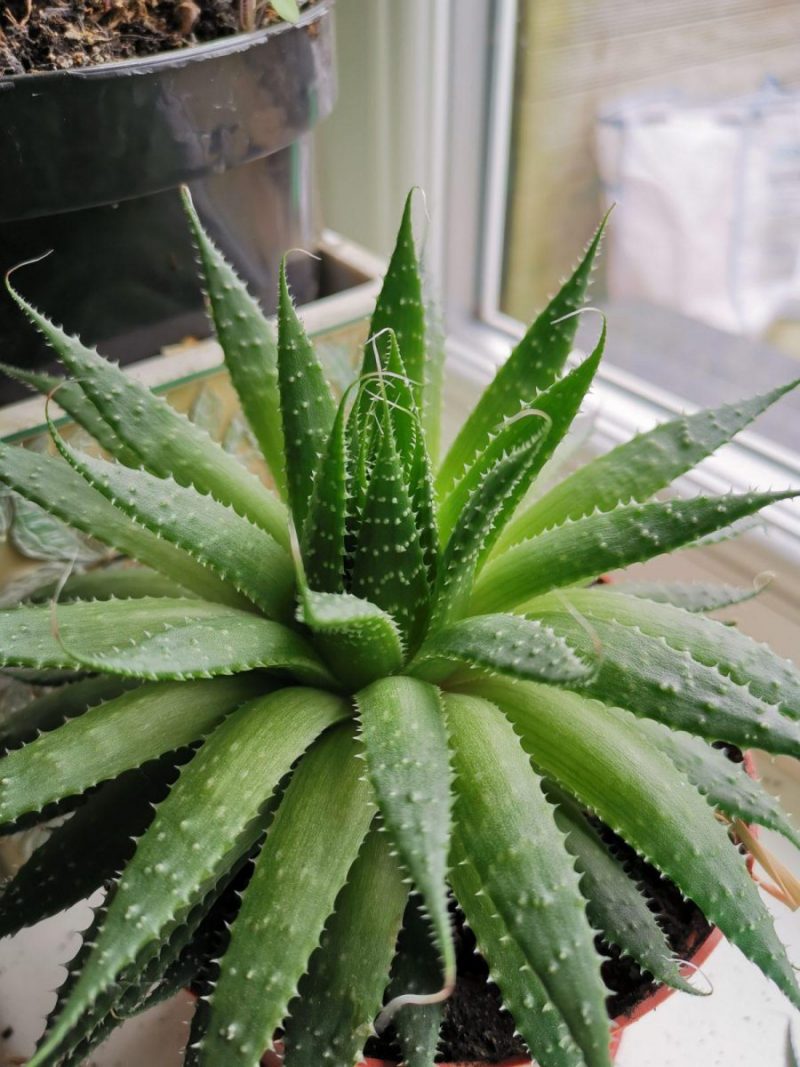
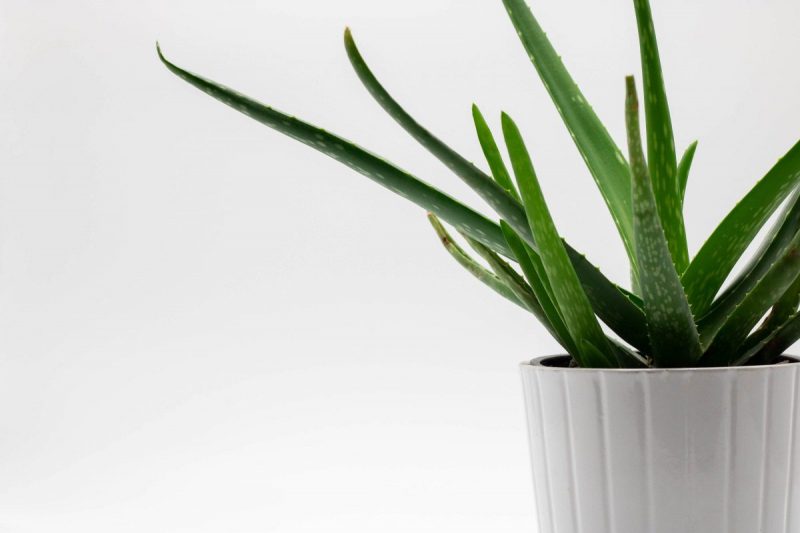
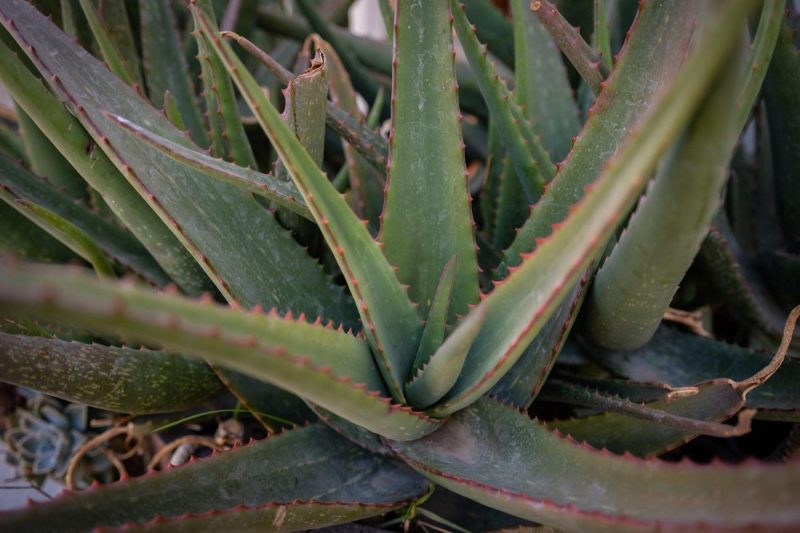
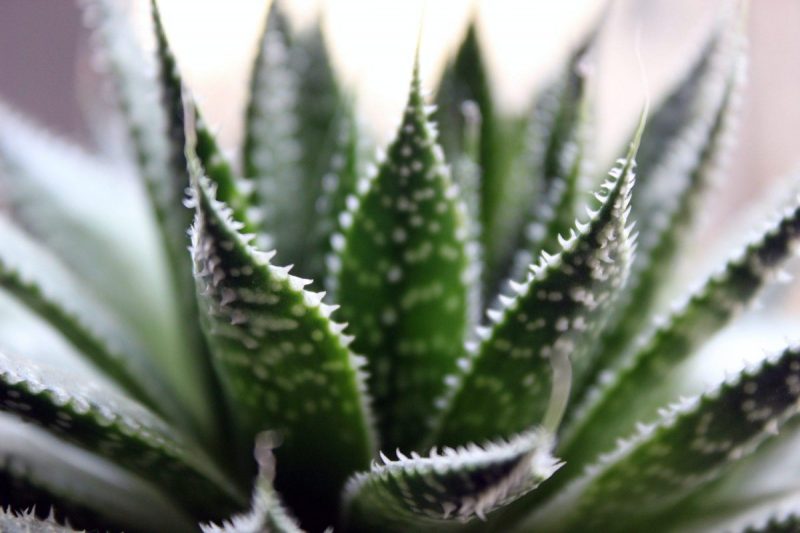
Environmental conditions
Light. It prefers bright places. Some species tolerate the sun very well, but only if it is not too intense.
Temperature. The plants grow best at a temperature of 22-25° C, and during winter it is recommended that the temperature does not drop below 8-10° C.
Humidity. It needs moderate humidity in the substrate, but it can also withstand periods without water.
Substrate. A substrate for succulent plants can be used. It must have a very good drainage capacity so that the water does not stagnate at the roots.
Recommended products
-
You can find products on a different store
Change Store -
You can find products on a different store
Change Store -
You can find products on a different store
Change Store -
You can find products on a different store
Change Store -
You can find products on a different store
Change Store -
You can find products on a different store
Change Store -
You can find products on a different store
Change Store -
You can find products on a different store
Change Store -
You can find products on a different store
Change Store -
You can find products on a different store
Change Store -
You can find products on a different store
Change Store -
You can find products on a different store
Change Store -
You can find products on a different store
Change Store -
You can find products on a different store
Change Store -
You can find products on a different store
Change Store -
You can find products on a different store
Change Store -
You can find products on a different store
Change Store -
You can find products on a different store
Change Store -
You can find products on a different store
Change Store -
You can find products on a different store
Change Store -
You can find products on a different store
Change Store -
You can find products on a different store
Change Store -
You can find products on a different store
Change Store -
You can find products on a different store
Change Store
Watering
It is done moderately so that between two waterings the soil dries completely. In autumn, the plants can be moved to a cooler place, reducing the amount of water. During the hot periods, the plants can be moved outdoors.
It is recommended to wipe the leaves with a damp cloth or brush.
Fertilization
It should be done in the spring-summer period with a liquid fertilizer for succulent plants.
Recommended products
-
You can find products on a different store
Change Store -
You can find products on a different store
Change Store -
You can find products on a different store
Change Store -
You can find products on a different store
Change Store -
You can find products on a different store
Change Store -
You can find products on a different store
Change Store -
You can find products on a different store
Change Store -
You can find products on a different store
Change Store -
You can find products on a different store
Change Store -
You can find products on a different store
Change Store -
You can find products on a different store
Change Store -
You can find products on a different store
Change Store -
You can find products on a different store
Change Store -
You can find products on a different store
Change Store -
You can find products on a different store
Change Store -
You can find products on a different store
Change Store -
You can find products on a different store
Change Store -
You can find products on a different store
Change Store -
You can find products on a different store
Change Store -
You can find products on a different store
Change Store -
You can find products on a different store
Change Store -
You can find products on a different store
Change Store -
You can find products on a different store
Change Store -
You can find products on a different store
Change Store
Propagation
Aloe plants are propagated through bush-dividing or by cuttings.
Recommended products
-
You can find products on a different store
Change Store -
You can find products on a different store
Change Store -
You can find products on a different store
Change Store -
You can find products on a different store
Change Store -
You can find products on a different store
Change Store -
You can find products on a different store
Change Store -
You can find products on a different store
Change Store -
You can find products on a different store
Change Store -
You can find products on a different store
Change Store -
You can find products on a different store
Change Store -
You can find products on a different store
Change Store -
You can find products on a different store
Change Store -
You can find products on a different store
Change Store -
You can find products on a different store
Change Store -
You can find products on a different store
Change Store -
You can find products on a different store
Change Store -
You can find products on a different store
Change Store -
You can find products on a different store
Change Store -
You can find products on a different store
Change Store -
You can find products on a different store
Change Store -
You can find products on a different store
Change Store -
You can find products on a different store
Change Store -
You can find products on a different store
Change Store -
You can find products on a different store
Change Store
Diseases and pests
The plants are sensitive to pests. The most common are aphids and mites.
Recommended products
-
You can find products on a different store
Change Store -
You can find products on a different store
Change Store -
You can find products on a different store
Change Store -
You can find products on a different store
Change Store -
You can find products on a different store
Change Store -
You can find products on a different store
Change Store -
You can find products on a different store
Change Store -
You can find products on a different store
Change Store -
You can find products on a different store
Change Store -
You can find products on a different store
Change Store -
You can find products on a different store
Change Store -
You can find products on a different store
Change Store -
You can find products on a different store
Change Store -
You can find products on a different store
Change Store -
You can find products on a different store
Change Store -
You can find products on a different store
Change Store -
You can find products on a different store
Change Store -
You can find products on a different store
Change Store -
You can find products on a different store
Change Store -
You can find products on a different store
Change Store -
You can find products on a different store
Change Store -
You can find products on a different store
Change Store -
You can find products on a different store
Change Store -
You can find products on a different store
Change Store
In addition:
- excessive watering causes root rot.
- Aloe vera ( A. Barbadensis ) is used for medicinal purposes, the juice from the leaves having different healing properties.














































































































































































































































































































































































































































